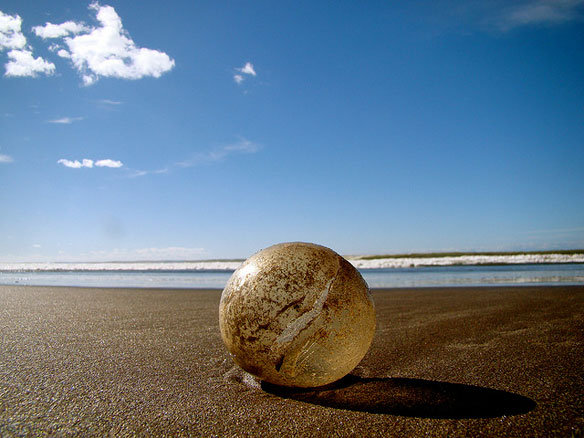
“El nacimiento.” A sea turtle egg. Photo source: ©© Emmanuel Frezzotti
Excerpts;
Besides being beautiful, Costa Rica’s beaches are the nesting sites of four endangered sea turtle species, which return each year to lay their eggs. But there is trouble in paradise for these reptiles, namely, from egg thieves.
Since 1996, it’s been illegal to remove turtle eggs from beaches in Costa Rica, said Beth Adubato, a New York Institute of Technology criminologist interested in crimes against wildlife. However, that hasn’t stopped egg thieves — egg poaching is up 30 percent since the law was put in place, she told LiveScience…
Read Full Article, LiveScience
Sea Turtle Egg Poaching Legalized in Costa Rica: The Debate, Coastal Care
An unusual project installed in 1990, to stabilize the population of Olive Ridley sea turtles in the coastal town of Ostional on Costa Rica’s Nicoya Peninsula, that led the government of Costa Rica to legally permit an exemption to the 1966 nationwide ban on harvesting sea turtle eggs, remains controversial…(Uploade 07-29-2011)
Turtles’eggs harvesting and its implication on beach and coastal erosion, by Latin America Sea Turtles
“Beaches and dunes are a fragile ecosystem that does not get many nutrients to support its vegetation, which is needed to help prevent erosion.
Sea turtles contribute nutrients to dune vegetation from their eggs. Every year, sea turtles lay countless numbers of eggs in beaches during nesting season.
Along one twenty-mile (32Km) stretch of beach in Florida alone, for example, more than 150,000 pounds of eggs are laid each year. Nutrients from hatched eggs as well as from eggs that never hatch and from hatclings that fail to make it into the ocean, are all sources of nutrients for dune vegetation. A decline in the number of sea turtles means fewer eggs laid, less nutrients for the sand dunes and its vegetation, and a higher risk for beach erosion.
The use of sand as a material for construction, reparation and raw material for concrete causes coastal erosion. When sand is removed, the currents create alterations in the coastal dynamic, eroding large parts of the beach and eggs. Sediment plumes from the rivers deposited on the marine bottom can change current patterns and lead to coastal erosion that affect nesting…”









